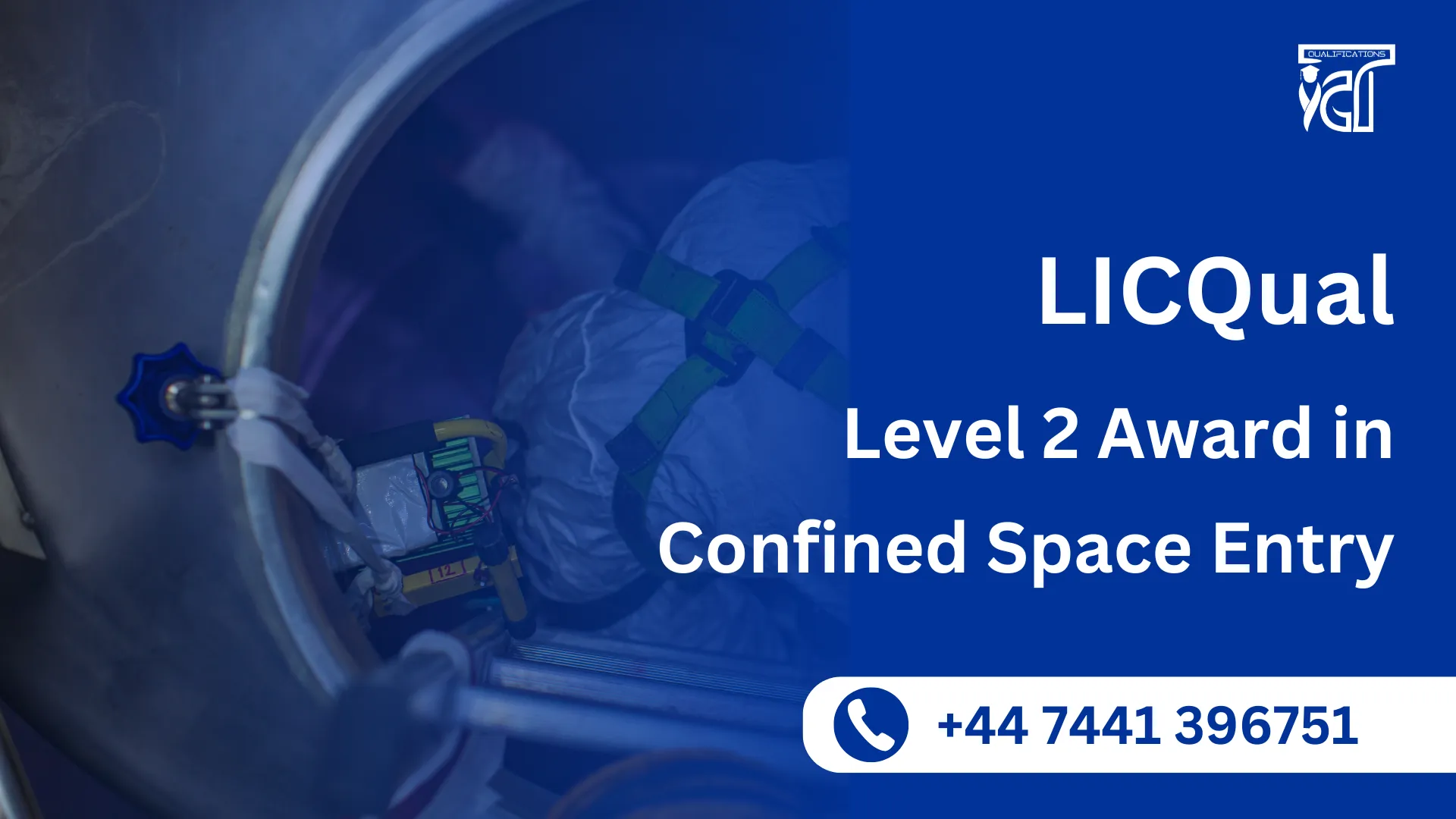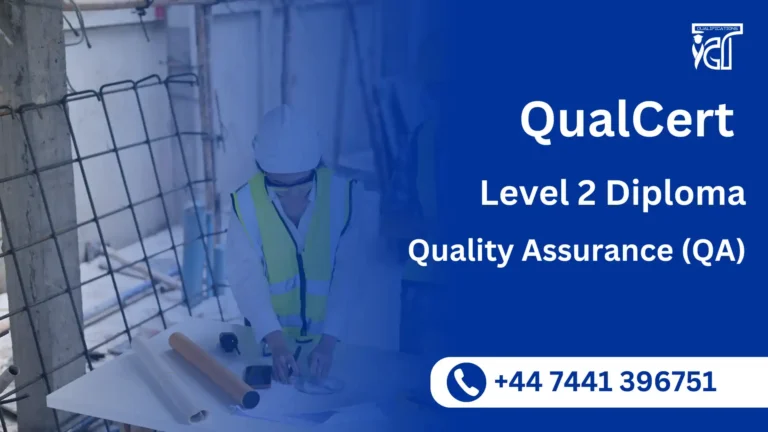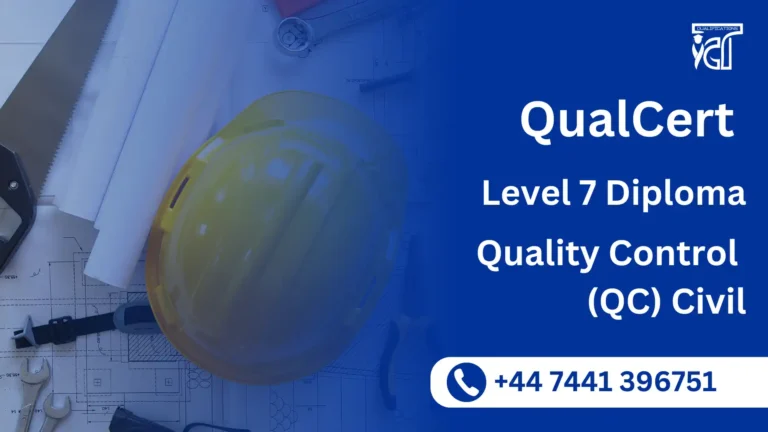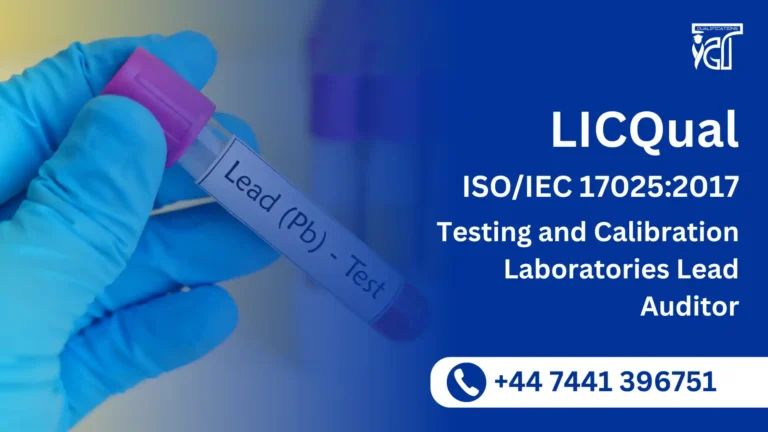Working in confined spaces poses significant risks—including exposure to toxic atmospheres, limited oxygen, and physical entrapment. The LICQual Level 2 Award in Confined Space Entry provides essential, practical training for individuals who must enter and work safely in these high-risk environments. Designed to meet international safety standards, this qualification prepares learners to not only enter confined spaces confidently but also handle potential emergencies with competence.
This course is ideal for workers, supervisors, and health and safety professionals who require a formal certification to work in confined spaces in industries such as construction, utilities, waste management, manufacturing, and oil and gas.
The LICQual Level 2 Award in Confined Space Entry builds upon basic awareness of confined space hazards and dives deeper into safe working procedures, equipment usage, and emergency response protocols. It is a hands-on, assignment-based program that meets employer and legal expectations for confined space entry and rescue readiness.
With a strong focus on risk assessment, atmospheric testing, and permit-to-work systems, this course ensures that workers understand not just how to enter confined spaces—but how to do so safely, effectively, and legally.
Each year, confined space incidents result in preventable injuries and fatalities. Comprehensive training is not just a regulatory requirement—it’s a life-saving necessity. By completing the LICQual Level 2 Award in Confined Space Entry, workers and supervisors ensure that best practices are followed every time a confined space is entered.
The LICQual Level 2 Award in Confined Space Entry is a powerful qualification that combines theory, practical application, and compliance with industry standards. Whether you are enhancing your personal credentials or strengthening your organization’s safety protocols, this course provides the tools, knowledge, and confidence needed to operate safely in confined space environments.
LICQual Level 2 Award in Confined Space Entry
Following are the mandatory units of LICQual Level 2 Award in Confined Space Entry:
| Unit Ref# | Unit Title | Credit | GLH |
| LICQ2200092-1 | Introduction to Confined Spaces | 1 | 2 |
| LICQ2200092-2 | Confined Space Hazards | 1 | 2 |
| LICQ2200092-3 | Legal and Regulatory Framework | 1 | 2 |
| LICQ2200092-4 | Safe Entry and Exit Procedures | 1 | 2 |
| LICQ2200092-5 | Emergency and Rescue Procedures | 1 | 2 |
| LICQ2200092-6 | Practical Application of Confined Space Safety | 1 | 2 |
GLH (Guided Learning Hours) and TQT (Total Qualification Time) are terms commonly used in vocational qualifications to help define the amount of time a learner is expected to spend on their studies.
1. GLH (Guided Learning Hours)
GLH refers to the number of hours a learner spends being directly taught, supervised, or supported during their course. This includes the time spent in activities such as:
- Classroom instruction
- Practical workshops
- One-on-one tutoring or mentoring sessions
- Online learning sessions with tutor support
In other words, GLH represents the time that learners are actively engaged with their instructors or learning activities.
2. TQT (Total Qualification Time)
TQT represents the total amount of time a learner is expected to invest in completing a qualification, including:
- GLH (Guided Learning Hours): Time spent on direct learning, as explained above.
- Self-Directed Learning: This includes time spent on independent study, research, assignment completion, preparation for exams, and any other work the learner does outside of direct teaching hours.
TQT is a broader measure that includes all the time required to achieve the qualification. It helps learners and employers understand the overall commitment required for the qualification.
Key Differences Between GLH and TQT:
- GLH focuses on direct learning with guidance or supervision.
- TQT includes GLH as well as independent study time and other learning-related activities.
Example:
If a qualification has a TQT of 600 hours and a GLH of 250 hours, it means the learner should spend 250 hours in direct learning (classroom, online, or tutor-led sessions) and 350 hours on independent study or research.
By the end of this course, learners will be able to:
- Introduction to Confined Spaces
- Understand the definition and types of confined spaces.
- Recognize the characteristics of confined spaces and their potential risks.
- Identify confined spaces in various industries and work environments.
- Understand the importance of confined space safety and the role of safety protocols.
- Confined Space Hazards
- Identify common hazards associated with confined spaces, including oxygen deficiency, toxic gases, and physical entrapment.
- Assess the potential risks posed by these hazards in different confined space environments.
- Understand the effects of confined space hazards on worker health and safety.
- Learn how to develop and implement strategies for hazard control and mitigation.
- Legal and Regulatory Framework
- Understand the legal responsibilities and obligations of employers and workers regarding confined space entry.
- Familiarize with key national and international regulations governing confined space work.
- Recognize the importance of compliance with health and safety laws, including risk assessments and emergency planning.
- Understand the role of regulatory bodies and how they influence confined space safety practices.
- Safe Entry and Exit Procedures
- Demonstrate an understanding of safe entry and exit procedures for confined spaces.
- Develop risk assessment techniques to evaluate the safety of confined space entry.
- Understand the importance of personal protective equipment (PPE) and its role in ensuring safe entry and exit.
- Apply best practices for monitoring and maintaining safe conditions during work in confined spaces.
- Emergency and Rescue Procedures
- Learn emergency protocols to follow in the event of an incident within a confined space.
- Understand the roles of emergency and rescue teams during confined space emergencies.
- Demonstrate knowledge of rescue equipment and its application in confined space scenarios.
- Apply first aid principles and emergency procedures to effectively respond to confined space incidents.
- Practical Application of Confined Space Safety
- Develop practical skills for conducting risk assessments in confined spaces.
- Learn how to use confined space safety equipment properly and effectively.
- Demonstrate the ability to conduct emergency drills and rescue operations in confined space environments.
- Apply theoretical knowledge to real-world confined space scenarios, ensuring safe practices are followed at all times.
Benefits of the LICQual Level 2 Award in Confined Space Entry
- Enhances Workplace Safety
- Equip workers with the essential skills and knowledge to identify hazards and mitigate risks associated with confined spaces, improving overall workplace safety.
- Legally Compliant
- Helps employers and employees meet regulatory requirements related to confined space entry, ensuring compliance with health and safety legislation.
- Industry-Recognized Qualification
- The LICQual certification is recognized globally, ensuring that learners meet internationally accepted standards for confined space safety.
- Improves Employability
- Demonstrates competency in confined space work, making learners more attractive candidates for jobs in high-risk industries such as construction, utilities, and oil & gas.
- Practical and Assignments-Based Learning
- Focuses on practical, real-world applications rather than traditional exams, allowing learners to gain hands-on experience in confined space operations.
- Prepares for Emergency Situations
- Teaches effective emergency response procedures, enabling learners to act swiftly and safely in the event of accidents or hazardous situations.
- Cost-Effective and Time-Efficient
- The course duration is typically short, making it a cost-effective way to upskill workers without disrupting their ongoing responsibilities.
- Foundation for Advanced Training
- Serves as a prerequisite for further qualifications in confined space entry and rescue operations, enabling career progression and development in safety management roles.
- Reduces the Risk of Accidents and Fatalities
- By providing critical safety knowledge, this course helps prevent confined space accidents, which are often preventable with proper training.
Who Is This Course For?
The LICQual Level 2 Award in Confined Space Entry is ideal for:
- Workers and Supervisors
- Individuals who are required to work in or supervise confined space operations as part of their job responsibilities.
- Industry Professionals
- Employees in sectors such as construction, manufacturing, utilities, and maintenance, where confined space entry is a regular task.
- Safety Professionals and Officers
- Health and safety officers, safety advisors, and those responsible for conducting workplace risk assessments will benefit from the safety procedures and risk management strategies taught in this course.
- Those Seeking Career Advancement
- Individuals looking to enhance their qualifications and skills to meet industry safety standards and comply with legal requirements for confined space entry.
- Risk Management and Emergency Response Specialists
- Those aiming to develop a deeper understanding of confined space hazards and learn essential emergency and rescue procedures.
- Employers and Team Leaders
- Employers or team leaders who wish to ensure that their workforce is properly trained, reducing risks and ensuring compliance with confined space safety regulations.
- Professionals Seeking Career Growth
- Anyone interested in gaining a recognized qualification in confined space entry, enhancing their career prospects in safety and industrial work.
Entry Requirements
Register Now
Qualification Process
Qualification Process for the LICQual Level 2 Award in Confined Space Entry
- Self-Assessment:
Begin by evaluating your eligibility to ensure you meet the qualification requirements, including work experience, knowledge, and language proficiency. - Registration:
Complete your registration by submitting the required documents, including a scanned copy of a valid ID, and paying the registration fee. - Induction:
An assessor will conduct an induction to confirm your eligibility for the course and explain the evidence requirements. If you do not meet the criteria, your registration will be canceled, and the fee will be refunded. - Assignmnets & Evidence Submission:
Provide all assignmnets and the necessary evidence based on the assessment criteria outlined in the course. If you are unsure of the required evidence, consult with the assessor for guidance on the type and nature of evidence needed. - Feedback and Revision:
The assessor will review your submitted evidence and provide feedback. Evidence that meets the criteria will be marked as “Criteria Met,” while any gaps will be identified. You will be asked to revise and resubmit if needed. - Competence Evidence:
Submit final evidence demonstrating that all learning outcomes have been met. This evidence will be marked as “Criteria Met” by the assessor once it is satisfactory. - Internal Quality Assurance (IQA):
The Internal Quality Assurance Verifier (IQA) will review your evidence to ensure consistency, quality, and compliance with standards. - External Verification:
The IQA will submit your portfolio to LICQual External Quality Assurance Verifiers (EQA) for final confirmation. The EQA may contact you directly to verify the authenticity of your evidence. - Certification:
Upon successful completion of all checks, LICQual will issue your official certificate, confirming that you have attained the LICQual Level 2 Award in Confined Space Entry.







